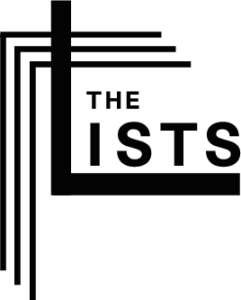ABOUT THE LISTS
THE LISTS is an open and playful database of creation techniques.
Here you can find various creation techniques and output types from different design disciplines. At a hands-on level THE LISTS tries to inspire you to go different and unexpected pathways in designing. We try to find gaps in between design practices and through this to discover new and surprising combinations and outcomes. It is also an opportunity to try new things far away from the routined comfort zone, to broaden one's horizon, so to say a prison break out of the own mental framework.
This also demands a certain interest towards the new/ the foreign, and provokes eventually interdisciplinary cooperations or a transdisciplinary view on projects. Here for you can explore all creation techniques and outputs. You can even favorise your most liked ones and create a personal list of them.
If you want to get inspired by a third party or exercise a bit of creative brain jogging: Try our different randomizers! A willingness to make mistakes, to think out of the box and to take notice coincidence can also be a designing factor is there for recommended.
THE LISTS database lives with inputs from different perspectives of people, so you are kindly invited to contribute and share your known creation techniques and output types. Let's keep THE LISTS growing!
Interesting thoughts
What was striking throughout the project was that, oddly enough, many of the best designs emerged when we were in some way (…) deprived of the opportunity to fully control the design process with preconceived expectations or learned rules.
Thomas & Martin Poschauko, Nea Machina
The purposeful coincidence is a contradiction in itself and can be considered not only as a contradiction but also as a kind of tool. Thus, it constantly invents new forms and produces a mass of ideas without the immediate selection based on subjective evaluation.
Jana Fuchs, Die Subjektivität des Zufalls
Thus, via combinatorics, one can arrive at cars with a larger number of wheels, use ecological fuels, can be packaged small and also have other uses. (…) Combinatorics opens up the possibility for designers to find combinations that they might not have come up with without this method, and to evaluate them individually and in larger groups.
Klaus Krippendorff, The semantic turn – A new foundation for design
(…) so, if they want to generate creativity, they can ask themselves: what are systematic frameworks in which creativity appears? But they can't 'do' creativity. otherwise we get into this friendly method of me saying: 'be creative!'
(…)
so please, when they talk about creativity, they talk about indirect possibility spaces, and not about generating directly. And one of the indirect possibility spaces of creativity is diversity. When they increase diversity in the system (…) Because systems with internal tensions generate unstable phases, and systems with unstable phases generate the possibility to transition to the new pattern, and that's what we call creativity.
Peter Kruse, über Kreativität



